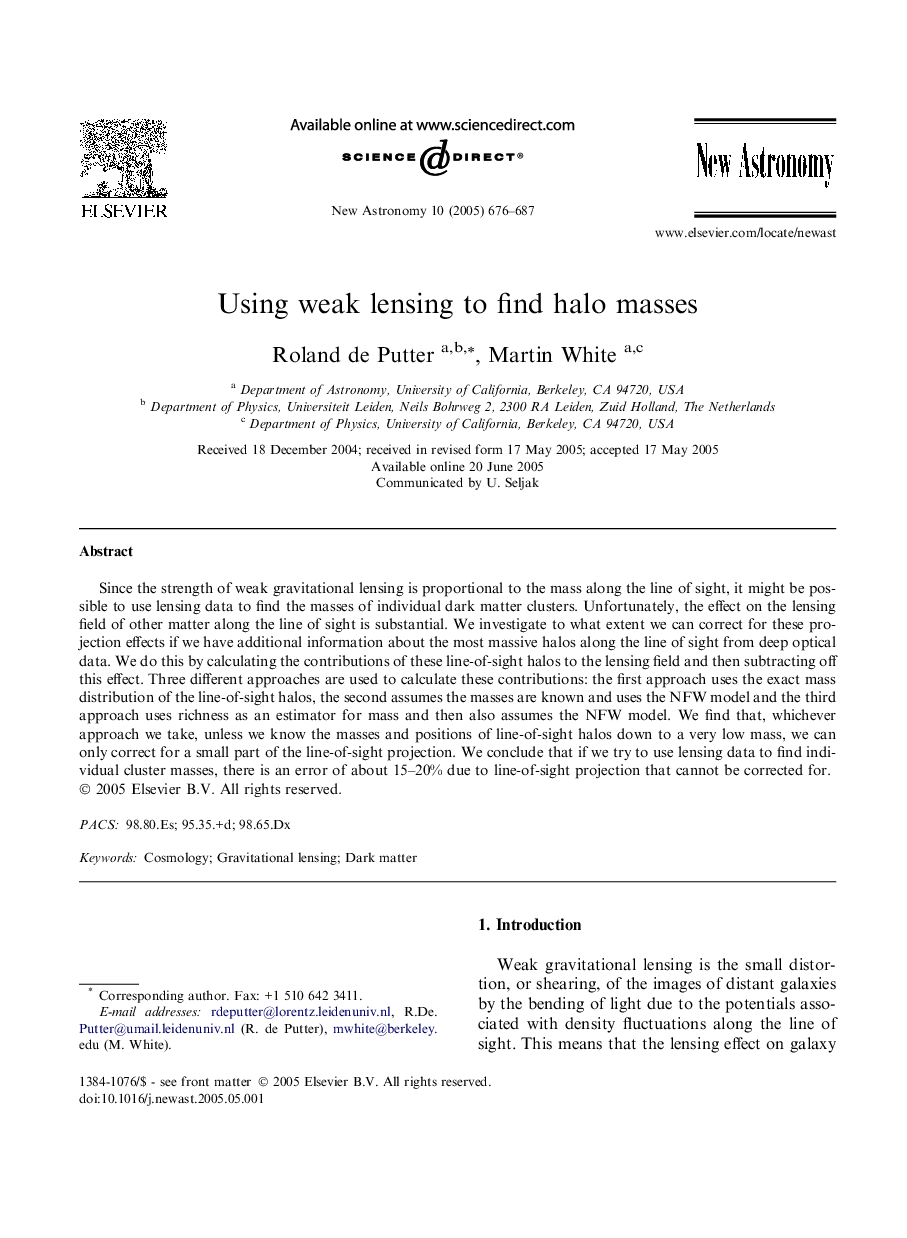| Article ID | Journal | Published Year | Pages | File Type |
|---|---|---|---|---|
| 9827958 | New Astronomy | 2005 | 12 Pages |
Abstract
Since the strength of weak gravitational lensing is proportional to the mass along the line of sight, it might be possible to use lensing data to find the masses of individual dark matter clusters. Unfortunately, the effect on the lensing field of other matter along the line of sight is substantial. We investigate to what extent we can correct for these projection effects if we have additional information about the most massive halos along the line of sight from deep optical data. We do this by calculating the contributions of these line-of-sight halos to the lensing field and then subtracting off this effect. Three different approaches are used to calculate these contributions: the first approach uses the exact mass distribution of the line-of-sight halos, the second assumes the masses are known and uses the NFW model and the third approach uses richness as an estimator for mass and then also assumes the NFW model. We find that, whichever approach we take, unless we know the masses and positions of line-of-sight halos down to a very low mass, we can only correct for a small part of the line-of-sight projection. We conclude that if we try to use lensing data to find individual cluster masses, there is an error of about 15-20% due to line-of-sight projection that cannot be corrected for.
Related Topics
Physical Sciences and Engineering
Physics and Astronomy
Astronomy and Astrophysics
Authors
Roland de Putter, Martin White,
